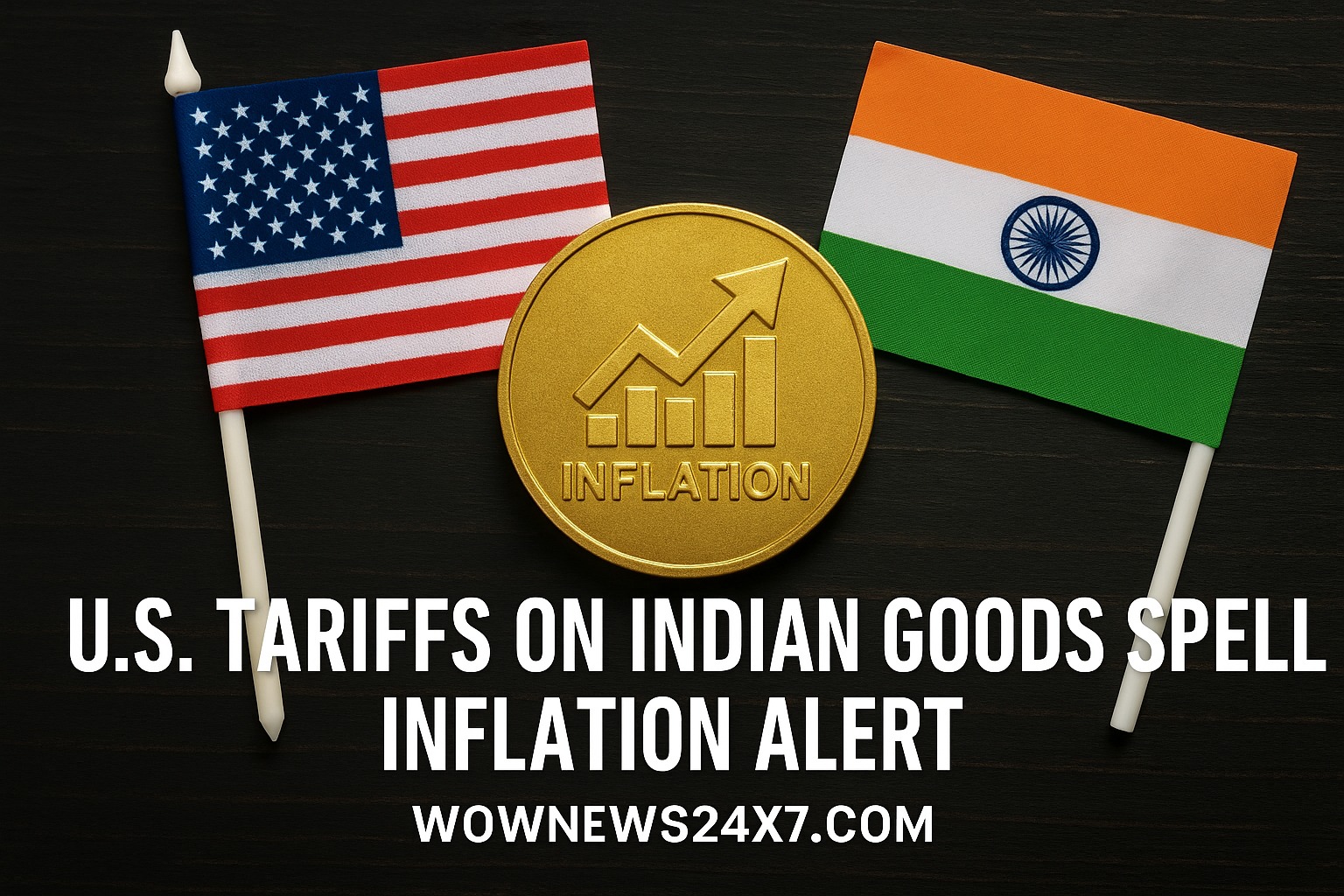In a dramatic escalation of global trade tensions, the United States has imposed a 25% blanket tariff on nearly all Indian goods, effective August 7, 2025. The unprecedented move—announced by President Donald Trump and described by analysts as one of the U.S.’s toughest measures against a key trading partner—has sent shockwaves through India’s export sector, triggered policy debate in Delhi, and raised fresh fears over the inflation outlook for both economies.
Why the New U.S. Tariffs?
The new tariffs come as part of a wider American crackdown on global trade imbalances. The Trump administration cites India’s sizable goods trade surplus with the U.S.—$45.7 billion in 2024—as a core grievance, as well as India’s continuing imports of Russian energy and defense equipment. Unlike previous tariffs that targeted select sectors, this move covers all Indian exports—with no exemptions even for key products such as pharmaceuticals, petroleum, electronics, and smartphones. In contrast, other nations have retained critical exemptions on specific categories.
Export Shock: Sectors and Scale
Impact on Key Sectors:
Pharmaceuticals (accounting for nearly half of U.S. generic drug imports), electronics (notably smartphones worth $10.9 billion in FY25), petroleum products, gems and jewelry, textiles, and auto components—all are now exposed to the full brunt of the 25% tariff.
Estimates suggest India’s overall goods exports to the U.S. could fall by as much as 30% in FY26, dropping from $86.5 billion in FY25 to around $60.6 billion. Particularly at risk are industries with high import content and slim margins. Textile exporters report urgent calls from U.S. buyers to halt shipments, fearing products will become uncompetitive versus those from countries with lower tariffs like Vietnam and Bangladesh.
Supply Chain Shockwave:
Portions of major Indian export sectors are expected to become less attractive to U.S. buyers, risking layoffs and lower production domestically. Meanwhile, multinational giants like Apple may reassess Indian sourcing, as their India-assembled devices face steep price hikes in the American market.
Will the Tariffs Raise Inflation?
For India:
While the U.S. is India’s largest export market, analysts say the impact on India’s overall inflation may be limited in the short term since domestic demand drives nearly 80% of the Indian economy, and India has diversified its trading partners. However, MSMEs and labor-intensive sectors catering to U.S. demand could see falling revenues, job losses, and weakened export-linked growth. If sustained, these shocks could indirectly dampen rural incomes and nudge up prices in export clusters.
For the U.S.:
Multiple studies and economists warn that the greater inflationary pressure may actually fall on the U.S. itself. American companies and households will now pay more for a vast array of imported goods, including cheap generics and consumer electronics. The SBI Research team estimates that U.S. tariffs could cost the average U.S. household about $2,400 in the near term, with low-income families facing a disproportionately heavier burden. U.S. inflation is projected to stay above the Federal Reserve’s 2% target through 2026, sustained by costlier imports from India and other tariff-hit nations.
Policy and Business Response
India’s policymakers have expressed “shock and dismay,” with vows to seek redress through diplomatic and trade channels. Domestic business lobbies call the decision “a double whammy”—putting Indian exporters at a disadvantage and favoring regional competitors who secured better terms with the U.S.. Sectors impacted most severely—pharmaceuticals, engineering, and textiles—are urging contingency planning, renegotiation, or even temporary government support.
For now, U.S. negotiators have left the door open for India to reduce or eliminate tariffs—should Delhi strike a new trade pact that addresses American concerns. Until then, exporters face stiffer competition and major pressure to absorb or pass on higher costs.
The Road Ahead
This trans-Pacific tariff standoff is set to test India’s export resilience and may accelerate long-term shifts toward market diversification and greater self-reliance. Experts warn that unless resolved, the mutual pain—especially via higher prices for U.S. consumers and lower export growth for India—could ripple through supply chains and global markets in the months ahead.
Relevant Sources: Economic Times, Reuters, Vision IAS, BBC, Rediff Money & Deccan Herald, Times of India, Indian Express, NDTV
